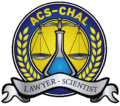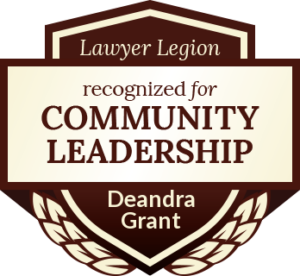Summary
Halloween brings excitement, costumes, and candy—but it also increases the risk of pedestrian accidents across North Texas. With more children on the streets and heightened distractions for both drivers and trick-or-treaters, it’s crucial to stay alert. This guide covers how fault is determined in pedestrian accidents, how insurance comes into play, and the essential steps to take if you’re involved in an incident. Whether you’re walking or driving, these tips can help you stay safe and protect your rights during the Halloween festivities. If you are involved in a pedestrian accident during Halloween, it’s important to know how to navigate the situation, determine fault, and deal with insurance claims.Firm Accolades
Understanding Fault in Pedestrian Accidents
In North Texas, as elsewhere, determining who is at fault in a pedestrian accident is a key factor in deciding who is responsible for damages and injuries. The cause of the accident can vary, but fault generally lies with either the driver or the pedestrian or may be shared by both parties.
The first party to consider when determining fault is the driver. During Halloween, drivers in North Texas must remain alert, as the streets are often filled with pedestrians, especially children, crossing at unpredictable places. It’s the responsibility of drivers to slow down in neighborhoods and residential areas where trick-or-treaters are expected. A driver who is speeding or distracted may be found at fault, especially if they fail to yield to pedestrians in a crosswalk or fail to stop at a red light when pedestrians are crossing.
Pedestrians also have a responsibility to ensure their safety. Although Halloween is a time when children may act impulsively, it’s important for parents and guardians to monitor their children closely while crossing streets. Pedestrians who cross the street without paying attention or jaywalk are at risk of being found partially or fully at fault for an accident. In some cases, a pedestrian who crosses the street at night in dark clothing or in an unlit area may be at fault due to low visibility.
It is also possible for both parties to share fault in the accident. If a driver is speeding but a pedestrian runs into traffic unexpectedly or crosses outside of a crosswalk, both the driver and the pedestrian may be partially responsible. In such cases, the degree of fault will be divided between both parties, affecting the outcome of an insurance claim.

Managing Partner
Partner & Criminal Division Chief

Criminal Trial Division
Criminal Trial Division
Of Counsel
How Insurance Plays a Role in Pedestrian Accidents
Understanding how insurance applies to pedestrian accidents is vital for both drivers and pedestrians involved in an accident. Whether you are driving or walking, knowing your insurance coverage can make all the difference when it comes to paying for medical bills, damages, and other expenses after an accident.For drivers, auto insurance will typically cover the costs if they are found to be at fault in a pedestrian accident. In Texas, drivers are required to carry liability insurance, which covers bodily injury and property damage caused to others. However, the extent of coverage depends on the type of insurance policy the driver holds. If the driver has full coverage, the pedestrian’s medical expenses may be covered by the driver’s insurance. This includes medical bills, lost wages, and other expenses related to the injury.
Pedestrians who have personal injury protection (PIP) insurance through their own auto insurance policy may be able to cover their medical expenses through their own insurance. If the pedestrian does not have an auto insurance policy, they may need to rely on their health insurance to cover the costs of the injury. If the pedestrian is involved in an accident caused by an uninsured or underinsured driver, their own uninsured motorist coverage may cover the damages.
Uninsured and underinsured motorist coverage is a critical aspect of insurance in pedestrian accidents. If a driver is uninsured or lacks sufficient insurance to cover the full cost of the pedestrian’s injury, the pedestrian may be able to file a claim through their own auto insurance or health insurance. If the pedestrian does not own a vehicle, they can also pursue compensation from the driver’s insurance company if they can prove fault.
Steps to Take After a Pedestrian Accident on Halloween Night
If you are involved in a pedestrian accident in North Texas, there are several steps to take immediately after the incident to protect your health and your legal rights.The first thing to do after a pedestrian accident is to ensure safety and seek medical attention. Even if the injuries seem minor, it’s important to seek medical care as soon as possible. In some cases, injuries from pedestrian accidents, such as internal injuries or concussions, may not be immediately apparent. It’s best to err on the side of caution and visit a medical professional for evaluation. After seeking medical care, the next step is to report the accident to the police. Calling the police and filing a report is crucial, as this report will serve as an important piece of documentation in your insurance claim and any potential legal proceedings. Be sure to provide accurate information, including the names and contact details of any witnesses.
Next, gather information at the scene of the accident. This includes taking photographs of the accident scene, the vehicle involved, any visible injuries, and any other evidence that may be relevant to the case. Be sure to exchange contact and insurance information with the driver involved in the accident, and if there are witnesses, get their contact information as well.
Finally, it’s important to consult a personal injury attorney after a pedestrian accident. An attorney with experience handling pedestrian accidents can help you navigate the legal process, determine fault, and handle communication with insurance companies. They can also help you understand your rights and ensure that you receive the compensation you deserve for your injuries.
Preventing Pedestrian Accidents on Halloween
While pedestrian accidents during Halloween are not always preventable, there are steps that both drivers and pedestrians can take to reduce the risk of an accident.For drivers, slowing down in neighborhoods and residential areas during peak trick-or-treating hours (usually between 6 PM and 9 PM) is essential. Drivers should be especially cautious near crosswalks, driveways, and intersections where children are most likely to cross the street. Additionally, drivers should avoid distractions such as texting or talking on the phone, which can delay their reaction time and increase the likelihood of an accident. Pedestrians should take extra care while walking on Halloween. Children should be supervised by adults at all times, and parents should ensure that kids only cross streets at designated crosswalks. Wearing reflective clothing or bright costumes can help increase visibility, especially at night. Carrying a flashlight or wearing a headlamp can also improve visibility and help prevent accidents.
Halloween in North Texas is a time for family fun and celebration, but it’s also a time when pedestrian accidents become more common. Understanding who is at fault in a pedestrian accident, how insurance works, and what to do after an accident are key steps in protecting yourself and ensuring that your rights are upheld. Whether you are a driver or a pedestrian, following safety guidelines and remaining vigilant can help reduce the risk of accidents during this busy holiday. If you are involved in a pedestrian accident, be sure to seek medical attention, report the incident to the authorities, gather evidence, and consult Deandra Grant Law to guide you through the claims process.


























